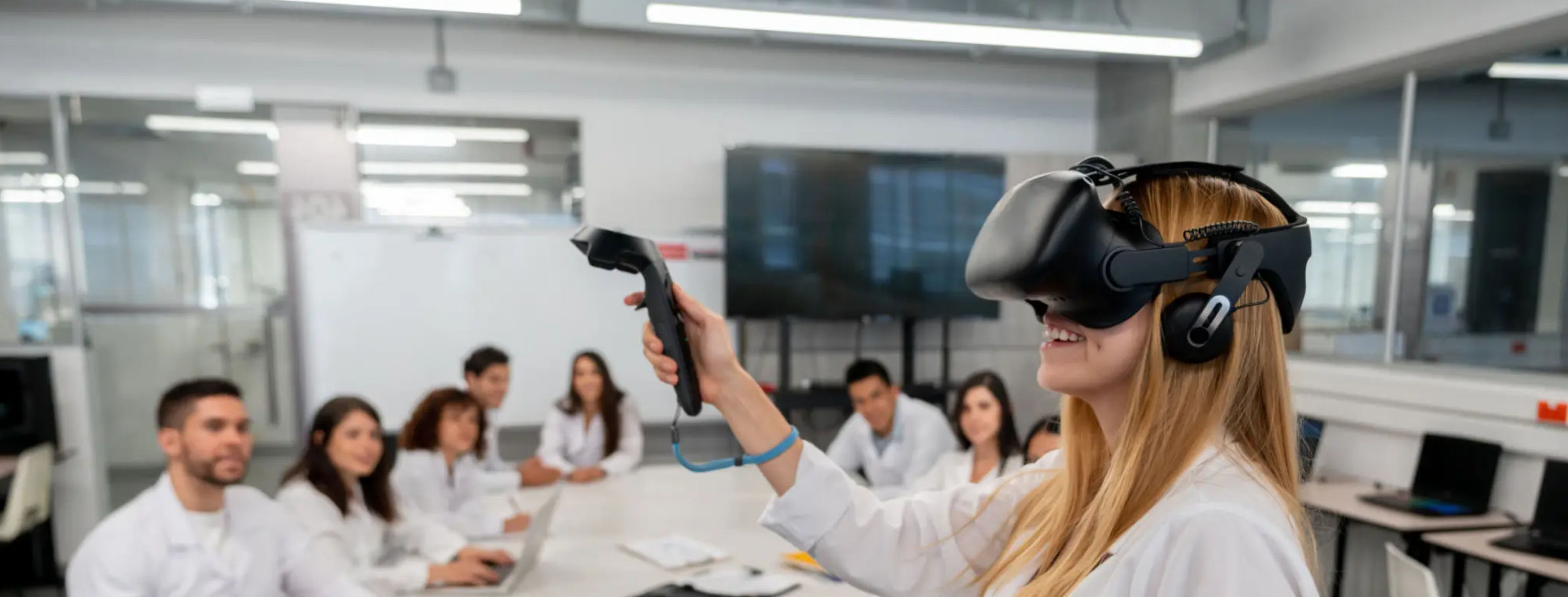
Virtual Reality (VR) gaming has transcended beyond the realms of entertainment, emerging as a revolutionary tool in education and training. Through immersive 3D environments, VR provides hands-on learning experiences that traditional methods cannot match. This technology is transforming fields such as medicine, aviation, and classroom education by offering safe, scalable, and repeatable scenarios for skill development.
The Impact on Medical Training
In the realm of medicine, VR simulations serve as an invaluable tool, allowing students to practice surgeries and diagnostic procedures in a risk-free environment. This innovative approach not only enhances learning outcomes but significantly reduces the anxieties associated with real-life medical practices. The transition from theoretical learning to applying these concepts in a real-world context can be daunting. VR provides a bridge, enabling learners to gain confidence and competence in a zero-risk environment. By practicing in simulations that closely mimic real-life situations, students can make mistakes, learn from them, and improve their skills without the fear of causing harm to a patient.
Transforming Aviation Training
For aviation, VR provides pilots with a platform to experience hundreds of flight scenarios and emergency procedures. This preparatory tool helps refine their skills in a cost-effective manner, without the need for expensive flight simulator setups. Traditionally, pilots are required to undergo comprehensive training for each type of aircraft they will operate. Previously, this necessitated significant investment from airlines in time, money, and resources to physically construct various cockpit simulators corresponding to each aircraft model. However, with the advent of virtual reality technology, the scenario has dramatically changed. By simply altering software code, trainees can now gain experience in numerous cockpit environments. This advancement not only provides aspiring pilots with the opportunity to train across a diverse array of aircraft but also has the potential to save the aviation sector billions of dollars.
Revolutionizing Classroom Education
VR gaming makes learning more engaging and interactive for students by bringing complex concepts to life. From exploring the vast universe to reliving historical events, VR transforms traditional education into an immersive experience. Imagine diving into the depths of the ocean to study marine biology, exploring the intricacies of coral reefs, and encountering exotic sea creatures—all without leaving the classroom. VR makes this possible, providing a level of detail and realism that textbooks simply cannot match.
Beyond just enhancing the learning experience, VR gaming in the classroom also addresses diverse learning styles. Visual and kinesthetic learners, who may struggle with traditional instructional methods, find VR particularly beneficial. By participating in interactive simulations, students are able to learn by doing, which improves retention rates and deepens their understanding of the subject matter. This hands-on approach, facilitated by VR, ensures that learning is not only more effective but also more inclusive, catering to a wider range of learning preferences and abilities.
Soft Skills Development
Beyond technical skills, VR also focuses on the development of soft skills like empathy, communication, and teamwork through simulated social scenarios. It fosters these essential abilities in a supportive and stress-free environment. VR simulations can transport users into a myriad of social situations and environments, challenging them to navigate complex interpersonal dynamics and decision-making processes. For example, a VR scenario might place an individual in a high-pressure business negotiation, a conflict resolution situation, or a scenario requiring compassionate communication. These immersive experiences allow individuals to practice and hone their soft skills in a realistic yet controlled setting, receiving immediate feedback on their performance.
Challenges and Considerations
Despite its vast potential, integrating VR into educational frameworks presents challenges, including high costs, the necessity for technical support, and ensuring the quality of VR content aligns with learning objectives. Another challenge is due to the fast advancements in VR technology. Implementing VR systems often involves navigating through complex bureaucracy. By the time that the systems are finally implemented, advances in VR technology may have already improved by leaps and bounds, rendering the new systems obsolete or soon-to-be obsolete.
Looking Forward
The future of VR in education and training holds immense promise. As technology becomes more affordable and accessible, VR is set to complement and enhance traditional learning methods, offering a novel approach to education and skill acquisition.
VR gaming is not only redefining entertainment but is also paving the way for innovative learning and training methodologies. Its immersive capabilities provide a unique, effective, and engaging learning experience that traditional education methods strive to achieve.
